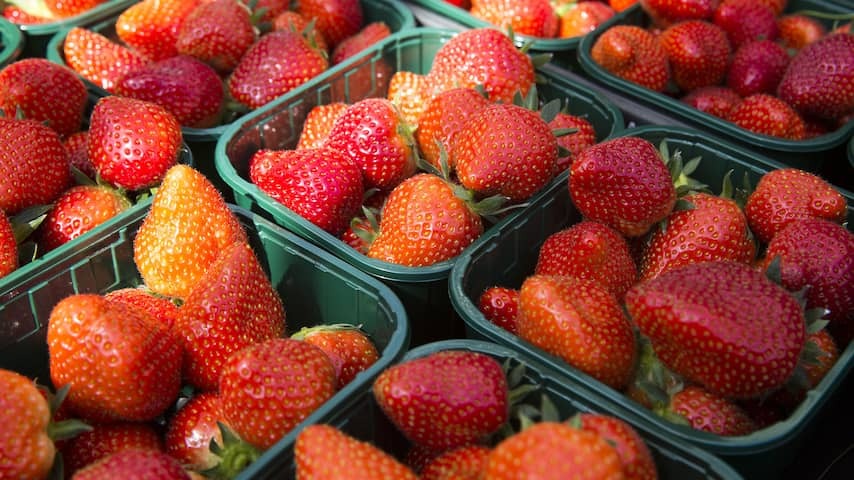
More and more strawberries are coming from Dutch soil. Last year, growers harvested 86 million kilos of the red fruit from the ground, a doubling compared to 2010. Increasingly, strawberries come from greenhouses or plastic tunnels.
It is striking that the land area used for growing strawberries has actually shrunk. Between 2010 and 2024, it decreased by 15 percent, according to new figures from statistics agency CBS.
Greenhouse horticulture requires less space than fruit cultivation in the open air. In 2024, three-quarters of the strawberry production came from a greenhouse or tunnel. Three times as many strawberries are now harvested from a greenhouse as in 2010.
Production is also increasing because strawberry plants in a greenhouse are “better protected against weather, pests and fungi,” says researcher Vinodh Lalta of the CBS. “I already noticed last February that there were Dutch strawberries in the supermarket. They are now available almost all year round, thanks to greenhouse horticulture.”
The improvements in fruit cultivation can also be seen in the figures for strawberries grown in open ground. The number of hectares for this has almost halved since 2010. At the same time, the amount of strawberries from open ground only decreased by 4.2 percent in that period.
Growers use even less land this year
The figures for 2025 are not yet complete. But the CBS already sees that Dutch strawberry growers are using even less land for their harvest this year.
Also for other soft fruits, fewer hectares are being used for cultivation this year, Lalta sees. The CBS includes blueberries, red currants, blackberries, raspberries and black currants in this.
“These fruit varieties do face strong competition from countries such as Germany and Poland,” says Lalta. “That’s why, unlike the strawberry, you see more of a wave pattern in the number of hectares on which the berries are grown.”
The blueberry is the most cultivated of all soft fruits. The fruit came under discussion at the beginning of this year after a recall by Albert Heijn. A number of people had been infected with hepatitis A after eating frozen blueberries. These berries came from Poland.